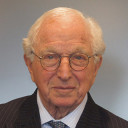WHIPLASH AND associated injuries are a range of mainly soft tissue injuries to the neck and back that affect a number of occupants of motor vehicles hit from the rear or from the side by other vehicles, as well as occasionally from other causes.
The symptoms from the neck injuries frequently do not develop for several hours and may not have developed until after an early visit to a doctor or an accident and emergency department.
A significant majority of those neck injuries are mild and clear away within a week or two, leaving no lasting ill effect.
A few victims appear to lose their symptoms over one to two months. In my experience those people have not made a full recovery and continue to have persisting tenderness and/or pain at the limit of one or more neck movements.
In my experience of nearly 2,000 whiplash victims with established symptoms, any victim with symptoms lasting more than a few weeks is, on the balance of probabilities, not going to recover completely in the absence of effective treatment. Various published papers show that after a few weeks the majority of the remainder slowly improve over several months but do not improve thereafter. As a result, any symptoms persisting at least six months are almost certainly going to be permanent in the absence of effective treatment.
Numerous doctors state that all whiplash injuries recover over one to two years. I have seen no evidence of that opinion in any published paper except for The Scientific Monograph of the Quebec Task Force on Whiplash-Associated Disorders (Spine Vol. 20, 8S, 1995), which makes such a claim but produces no evidence to back it up. It discussed a few papers, in all of which a substantial number of the victims had long-term problems, but produced no paper in which all the victims had recovered.
The report states: “Whiplash-associated disorders are usually self-limited. In a cohort of persons compensated for whiplash injuries occurring in Quebec, the median time to recovery (end of disability compensation) was 31 days. Fifty-five percent of the cohort filed claims for whiplash only; 1.9% of these were still disabled one year after their injury.”
The authors seem to be basing their opinion on the fact that only 1.9% had an absence from work of longer than a year. No evidence was produced to suggest that these people who had gone back to work were symptom free.
A few papers show that a number of the victims have symptoms that worsen with time. I have seen 45 victims for a second medico-legal report. In 44 of those the tenderness was more widespread on the second occasion and in many of them the neck movements were more restricted. I have also seen several of them on at least one further occasion. Deterioration continued and seemed to do so more quickly in the young physically active claimants. As the deterioration progresses, a clinical picture emerges that is virtually indistinguishable from fibromyalgia.
Back pain appears to develop in a significant minority of whiplash victims, usually a few days after the relevant accident. Unfortunately, very little has been published about the problem, but one published paper states: “Patients presenting with backache were never ultimately symptom free.”
Basically I agree with that statement, except that I have seen a few victims who settled down within a few days of the onset of symptoms. In my experience, pain and tenderness in the dorsi-lumbar region tends to spread slowly in all directions: upwards to possibly join up with any pain in the neck and upper thorax, sideways as far as the lateral abdominal muscles producing the clinical picture labelled ‘nonorganic’ by Waddell et al and downwards to the pelvis from where it spreads down the back of the legs.
The treatment of whiplash seems to be poor worldwide. Physiotherapists frequently claim – or are given – the credit for improvement in the first few months; but as spontaneous improvement is usually taking place then, it is difficult to evaluate the benefits of physiotherapy at that stage.
There is no real evidence that standard physiotherapy is beneficial after the first few months. I have been using trigger point therapy for over 30 years and I have been experimenting with various treatments for whiplash injuries for a good number of years. The following is my personal unpublished experience.
- Bowen therapy is beneficial when applied within hours of the relevant accident.
- Cold sprays, low-level laser treatment and frequent injections of local anaesthetic etc are helpful in the early stages.
- Ultrasound therapy with the machine at moderately high power is very successful in the later stages but may need to be supplemented by spinal manipulation in any problem that has been present for over six months.
If properly and frequently applied, this regime nearly always results in clearing of the symptoms.



 “Speculate before you accumulate. I am a long term regular writer and advertiser in 'Your Expert Witness - the Solicitor’s Choice'. This investment pays me substantive dividends; I get more Expert Witness work with every issue. Not only solicitors and barristers but also judges seem to read it. It is a win-win situation. Success breeds success; I must continue to write and advertise.”
“Speculate before you accumulate. I am a long term regular writer and advertiser in 'Your Expert Witness - the Solicitor’s Choice'. This investment pays me substantive dividends; I get more Expert Witness work with every issue. Not only solicitors and barristers but also judges seem to read it. It is a win-win situation. Success breeds success; I must continue to write and advertise.”
























































































































